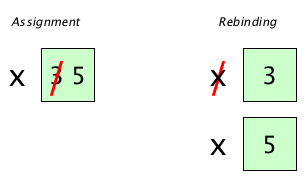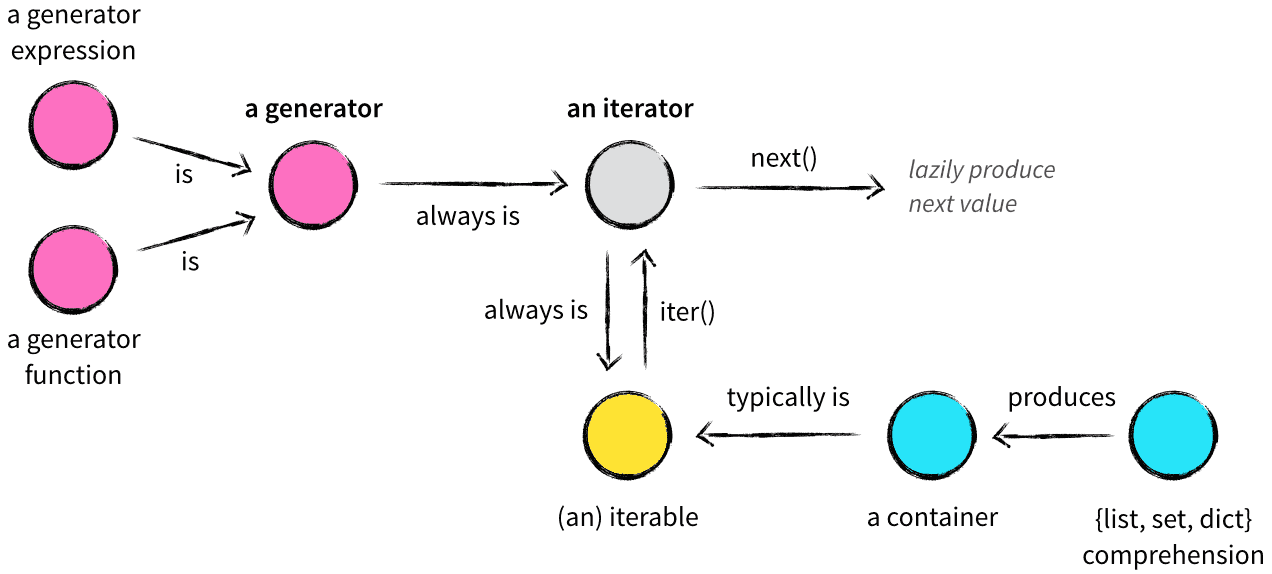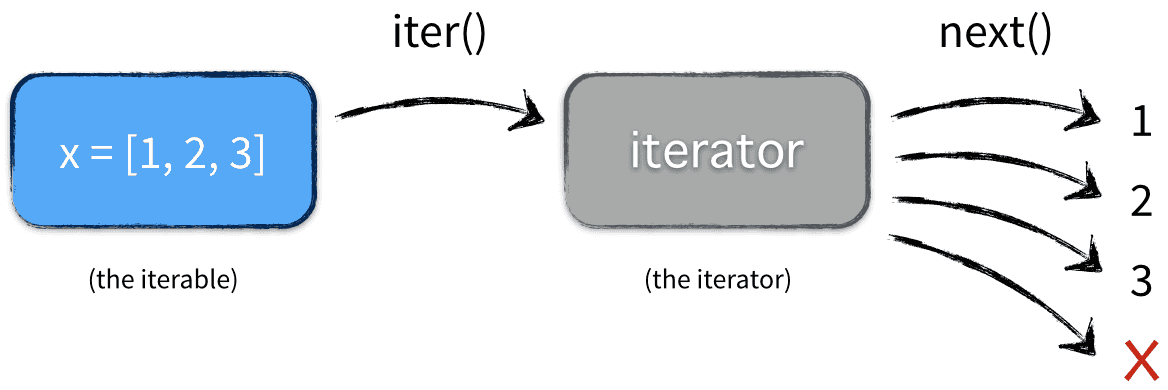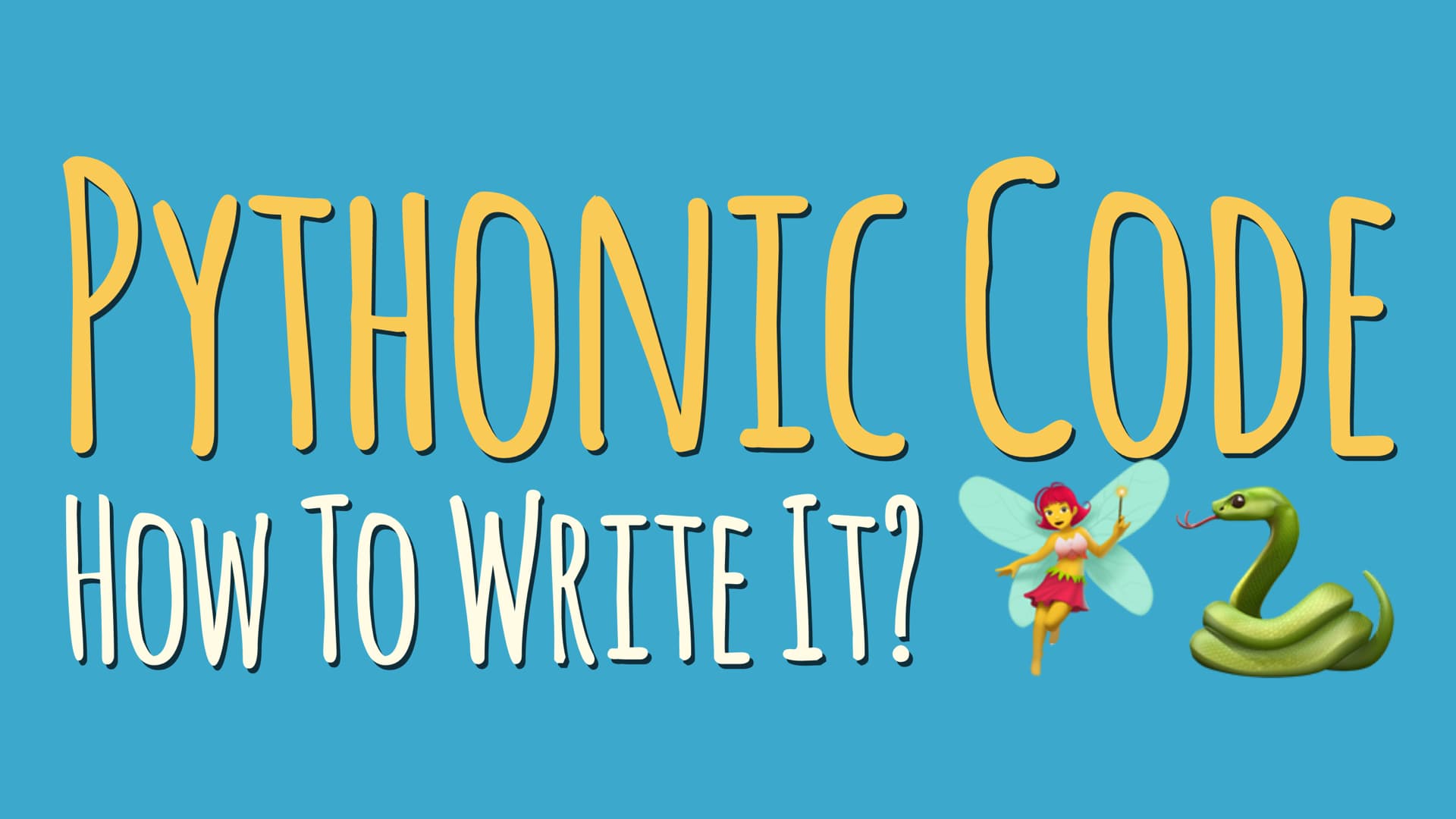Python Camp

Life is short. You need Python.
Introducing Python Object Types
The Python Conceptual Hierarchy
- Programs are composed of modules.
- Modules contain statements.
- Statements contain expressions.
- Expressions create and process objects.
Python Object
- Traditional programming often stress its three pillars of
- sequence (“Do this, then that”)
- selection (“Do this if that is true”)
- repetition (“Do this many times”)
-
Python has tools in all three categories, along with some for definition—of functions and classes.
- object : the more strongly unifying principle in Python
- Everything we process in Python programs is a kind of object.
Python’s Core Data Types
- built-in objects (types) : the core of every Python program
- The principal built-in types : numerics, sequences, mappings, classes, instances and exceptions
- Numeric types :
int,float,complex - Sequence types :
list,tuple,range - Text sequence type :
str - Binary sequence types :
bytes,bytearray,memoryview - Set types :
set,frozenset - Mapping types :
dict
- Numeric types :
- The principal built-in types : numerics, sequences, mappings, classes, instances and exceptions
- literal : an expression whose syntax generates an object—sometimes also called a constant.
- Literals are notations for constant values of some built-in types.
- There are no type declarations in Python. The syntax of the expressions (object-generation expressions) determines the types of obejcts.
# a literal expression that generates and returns a new string object
'spam'
- Identifier or Variable
- Python은 모든 것을 object로 다루기 때문에 variable(변수)보다는 변수, 상수, 함수, 사용자 정의 타입 등의 ‘이름’을 지칭하는 identifier(식별자)라는 용어를 사용한다.
- 이름을 잘 짓는 것이 매우 중요하다!
- (저장된 값의) 의미가 명확하게 드러나도록!
- 기본적인 형식(규약)을 지켜서!
- Case-sensitive names
- Camel case : Python에서는 잘 사용하지 않는다.
- e.g. camelCaseExample
- Pascal case : class
- e.g. PascalCaseExample
- Snake case : function and variable
- e.g. snake_case_example
- Camel case : Python에서는 잘 사용하지 않는다.
- 이름을 잘 짓는 것이 중요하다!
- Assignment (할당, 대입) vs. Binding (Python에서의 표현)
- A variable is created when you assign it a value, may be assigned any type of object.
=: assignment operator (할당 연산자)

# [Error] 'obj'라는 변수는 정의(선언)되지 않았으므로 사용할 수 없다.
obj
# Print all interactive variables, with some minimal formatting.
%who
# Return a sorted list of all interactive variables.
%who_ls
# Like %who, but gives some extra information about each variable.
%whos
- Once you create an object, you bind its operation set for all time.
- Python is dynamically typed.
- A model keeps track of types automatically instead of requiring declaration code.
- But it is also strongly typed.
- A constraint that means you can perform on an object only operations that are valid for its type.
- Python is dynamically typed.
# 1. 'obj' is a string object.
obj = 'spam'
# 자동으로
type(obj)
len(obj)
# 2. 'obj' is a list object.
obj = [1, 2, 3]
type(obj)
len(obj)
# 3. Now, 'obj' is a numeric (integer) object.
obj = 10
type(obj)
# [Error] int object에는 len function을 사용할 수 없다. (또는 int object는 len method를 가지고 있지 않다.)
len(obj)
Numbers
Numeric Objects
- integers that have no fractional part
- floating-point numbers with fractional part
- complex numbers with imaginary parts
- decimals with fixed precision
- rational numbers (유리수) with numerator (분자) and denominator (분모)
- full-featured sets
- Booleans :
TrueorFalse
Numeric objects를 통해서 다시 한 번 binding 과정을 살펴봅시다. Assignment operator를 통해 값을 할당할 수 있습니다.
x = 1
x
Assignment operator를 수학 기호인 등호와 혼동하면 안 됩니다.
# '1 = 1 + 10'이라니?
x = x + 10
x
float type and numeric operation
x = 1.1
y = 2.2
z = 3.3
# Why?
z == x + y
The other numeric objects in third-party libraries (e.g. matrixes and vectors)
from decimal import Decimal
a = Decimal('.2')
b = Decimal('.1')
c = a + b
c
Strings
- string: immutable sequence of Unicode code points
- Python은 문자(낱자)와 문자열을 별도로 구분하지 않는다.
- String literal은
'(single quotes) 또는"(double quotes)로 묶어준다.
type('A')
type('Hello, world!')
type("Apple")
Q. 문자열 안에 ‘ 또는 “를 포함시키고 싶다면?
# TODO:
- 여러 줄의 string literal은
'''또는"""(triple quoted)로 묶어준다.- Triple quoted strings may span multiple lines - all associated whitespace will be included in the string literal.
s = '''Hello,
world
and
Python!'''
s
s = """Hello,
world
and
Python!"""
s
print(s)
s = '이렇게도 줄바꿈이 가능하지만, \
연결만 해줄 뿐 \
실제로 개행이 들어가지는 않는다.'
s
print(s)
Escape Code
\n는 갑자기 어디서 튀어나온 건가요?
# TODO: 점프 투 파이썬 참조
String Prefix
- bytes literals:
b'',B''- They produce an instance of the bytes type instead of the str type.
- raw strings:
r'',R''- They treat backslashes as literal characters.
- formatted string literal (f-string):
f'',F''- These strings may contain replacement fields, which are expressions delimited by curly braces {}. While other string literals always have a constant value, formatted strings are really expressions evaluated at run time.
b = b'It is not the str type but the bytes type.'
type(b)
b
r = r'Backslash(\)를 literal character로 다룸으로써 \n, \t 등 escape characters를 허용하지 않는다.'
r
print(r)
a = 1
b = ': it is a expression evaluated at run time.'
f = f'a is {a}{b}'
f
String Formatting
# TODO: 점프 투 파이썬 참조
Sequence
- sequence : a positionally ordered collection of other objects
- Sequence types hold values in an indexable and sliceable order. (순서가 있다. = Indexing과 slicing이 가능하다.)
- left-to-right order
- Sequence operations
- built-in
lenfunction - indexing: Indexes are coded as offsets from the front, and so start form 0.
- Positive indexes count from the left, and negative indexes count back from the right.
- We can use an arbitrary expression in the square brackets.
- slicing: a way to extract an entire section (slice)
- concatenation with +
- repetition with *
- built-in
Length of sequence
s = 'Hello, Python!'
len(s)
Indexing
# Positive index
s[0]
# Negative index
s[-1]
Q. 숫자만 index로 사용할 수 있을까?
# TODO:
Slicing
# 세미콜론 뒤에 위치하는 index의 의미에 주의!
s[7:13]
Q. 위와 동일한 결과를 만드는 slicing 방법?
# TODO:
s[7:]
s[:7]
s[:]
자유롭게 indexing과 slicing 연습을 하다보면 문득 궁긍해질 것이다. 기존 object ‘s’는 어떻게 되었을까?
# 's'는 변하지 않았다. Indexing과 slicing이 return(반환)하는 것은 새로운 object이기 때문이다.
s
Polymorphism
- polymorphism (다형성): A general property of Python. The meaning of an operation depends on the objects operated on.
# Plus sign (+) means addition for numbers.
1 + 1
# Plus sign (+) means concatenation for string.
'Hello, ' + 'Python!'
Mutability
- Mutable :
list,dict,set,bytearray,memoryview- Mutable objects can change their value but keep their id.
- Immutable :
numeric,str,tuple,frozenset,bytes- An object with a fixed value. Immutable objects include numbers, strings and tuples. Such an object cannot be altered. A new object has to be created if a different value has to be stored. They play an important role in places where a constant hash value is needed, for example as a key in a dictionary.
Immutable objects cannot be changed in place after they are created.
s
# [Error] String은 immutable이므로 값을 직접 변경할 수 없다.
s[0] = 'h'
Q. 그렇다면, 첫 글자 H를 소문자로 변경하기 위해 어떻게 해야 할까?
# TODO:
Type-Specific Methods
- method: functions that are attached to and act upon a specific object, which are triggered with a call expression.
- Methods act on the subject that they are attached to and called form.
- Generic operations that span multiple types show up as
- built-in functions:
len() - expression:
str[0]
- built-in functions:
- but type-specific operations are
- method calls:
str.find()
- method calls:
- Although some types share some method names, string method operations generally work only on strings, and nothing else.
※ built-in functions: The Python interpreter has a number of functions and types built into it that are always available.
s
s.find('ll')
s.replace('Hello', 'hello')
Q. replace method를 사용했는데도 ‘s’는 변하지 않았다. 왜 그럴까?
s
Q. str에 속하는 methods는 어떤 것들이 있는지 확인해보자. ‘r’로 시작하는 methods는 몇 개일까?
# TODO:
Q. 다음 코드는 어떻게 해석해야 할까?
s.upper().split(',')
Formatting
- formatting: an advanced substitution operation which strings support
- formatting expression
- formatting method
Getting Help
dir
dir: a built-in function. It returns a list of all the attributes available for any object passed to it.
Q. dir을 알았으니 이제 우리는 str에 속한 모든 attributes와 methods(function attributes)의 개수를 알 수 있다. 총 몇 개일까?
# TODO:
Built-in functions의 개수와 각각의 이름도 알 수 있다.
len(dir(__builtin__))
dir(__builtin__)
Help
- help: a built-in function to ask what they do (to see pydoc.help)
- PyDoc: a tool for extracting documentation from objects
- Docstring: a string literal that occurs as the first statement in a module, function, class, or method definition
help()
help(str)
help(s)
help('literal')
help(str.lower)
# Shitf + Tab: cell을 실행하지 않고 바로 Docstring 보기
# Shitf + Tab을 연속으로 두 번 누르면 스크롤이 생성되면서 Docstring 전체를 볼 수 있다.
s.lower()
# Introduction and overview of IPython's features
?
# Details about 'object'.
str?
# More detailed, verbose information about 'object'.
sys??
Lists
- list: positionally ordered collections of arbitrarily typed objects
- the most general sequence provided by Python (
listmay be reminiscent of arrays in other languages.) - no fixed type constraint (
listcan contain different types.) - no fixed size (
listcan grow and shrink.) - mutable (
listcan be changed inplace)
- the most general sequence provided by Python (
l = [1, 'item in list', [10, 10., 0o10, 0x10]]
l
id(l)
l.append('new item')
l
id(l)
l[0] = 817
l
id(l)
Q. Sequence operations를 사용해보자.
# TODO:
Q. Type-specific operations를 사용해보자.
# TODO:
Bounds Checking
l
# [Error] 범위를 벗어난 위치에 대해 indexing 할 수 없다.
l[100]
# [Error] 범위를 벗어난 위치에 값을 할당할 수 없다.
l[100] = 42
Nesting
# a 3 × 3 matrix, as nested lists
list_with_nested_lists = [[1, 2, 3],
[4, 5, 6],
[7, 8, 9]]
list_with_nested_lists
Q. list_with_nested_lists의 길이는?
# TODO:
Q. Indexing을 어떻게 해야 할까. 먼저 두 번째 row [4, 5, 6]을 가져온 후, 세 번째 item 6만 가져와보자.
# TODO:
Comprehensions
- List comprehensions make new lists of results.
- They derive from set notation; they are a way to build a new list by running an expression on each item in a sequence, one at a time, from left to right.
- They tend to be very useful in practice and often provide a substantial processing speed advantage.
- Other roles: it’s not just for making lists today.
- List, sets, dictionaries, and generators can all be built with comprehensions.
list_with_nested_lists = [[1, 2, 3],
[4, 5, 6],
[7, 8, 9]]
col_list = [row[1] for row in list_with_nested_lists]
col_list
col_list = [row[1] + 1 for row in list_with_nested_lists]
col_list
col_list = [row[1] for row in list_with_nested_lists if row[1] > 3]
col_list
Dictionaries
- dict: They are mappings; the only mapping type in Python’s core objects set.
- collections of other objects
- not sequence: Mappings don’t maintain any reliable left-to-right order; it may be scrambled.
- mapping (a series of key and value pairs): They simply map mnemonic keys to associated values.
- Keys must be of immutable types.
- mutable
d = {'이름': '김태진', '학교': '가천대', '학년': 4, '수강과목': ['의료영상', '생체신호처리']}
d = {'name': 'Taejin Kim', 'university': 'Gachon Univ.', 'grade': 3, 'lectures': ['Medical Imaging', 'Biosignal Processing']}
d
- Dictionaries can also be used to replace searching operations—indexing a dictionary by key is often the fastest way to code a search in Python.
We can index dictionary by key to fetch and change the keys’ associated values.
# Fetch
d['name']
# Change
d['grade'] = 4
d
Unlike out-of-bounds assignments in lists, which are forbidden, assignments to new dictionary keys create those keys.
# An empty dictionary
d = {}
d
# Add a new key and the keys' associated value.
d['name'] = 'Taejin Kim'
d
d['university'] = 'Gachon Univ.'
d['grade'] = 4
d['lectures'] = ['Medical Imaging', 'Biosignal Processing']
d
Nesting
d['name'] = {'first': 'Taejin', 'last': 'Kim'}
d
Q. Indexing dictionary by key로 first name 가져오기.
# TODO:
Q. 수강과목 추가하기.
# TODO:
Q. 마지막으로 추가한 수강과목 indexing 하기.
# TODO:
Missing Keys
# [Error] 'age'란 Key는 존재하지 않는다. Referencing a nonexistent key is an error.
d['age']
- How to avoid
KeyError? 1) To test ahead of time
d.items()
d.keys()
d.values()
in: membership expression
1 in [1, 2, 3]
't' in 'Python'
'th' in 'Python'
1.0 in [1, 2, 3]
'p' in 'Python'
'age' in d
if statement: the main selection statement tool in Python
if 'age' in d:
d['age']
- How to avoid
KeyError? 2)getmethod: a conditional index with a default
d.get('age')
# Key가 존재하지 않을 경우 반환되는 default 값은 None
print(d.get('age'))
# Key가 존재하지 않을 경우 반환되는 값을 0(get method에 전달되는 두 번째 argument(인자))으로 지정
d.get('age', 0)
사실 get method는 if/else ternary expression(an if statement squeezed onto a single line)으로 정의되어 있다.
d['age'] if 'age' in d else 0
Iteration and Optimization
- iterable: either a physically stored sequence in memory or an object that generates one item at a time in the context of an iteration operation.
- For loop and list comprehension expression work on any iterable object.
- Iterables vs. Iterators vs. Generators

- Iterable objects support the iteration protocol—they respond to the iter call with an object that advances in response to next calls and raises an exception when finished producing values.

- generator: its values are not stored in memory all at once, but are produced as requested, usually by iteration tools.
- file object: it similarly iterate line by line; it’s fetched on demand.
- Every Python tool that scans an object from left to right uses the iteration protocol.
Q. 아니 그런데, 코딩만 잘 하면 되지 이런 걸 꼭 알아야 해요?
# TODO: 빈 list 생성
list()
# TODO: list의 소괄호 안에 커서를 두고 Shitf + Tab을 눌러보자!
list(d.keys())
Tuples
- tuple: toughly like a list that cannot be changed; they’re used to represent fixed collections of items.
- immutable sequence
- They support arbitrary types, arbitrary nesting, and the usual sequence operations.
Q. lsit와 매우 비슷해보인다! 그리고 이제 우리는 sequence와 immutable이 무엇인지 안다! 그렇다면, tuple로 무엇을 할 수 있을지 추론해보자.
# TODO:
다음과 같이 한 개의 아이템을 갖는 튜플을 만들 때 주의!
t = (1)
type(t)
t
t = (1,)
type(t)
t
t = (1, 2, 3)
# [Error] Tuples are immutable sequences.
t[0] = 0
# [Error] Tuples don't grow and shrink.
t.append(4)
Tuple Packing
- 소괄호를 생략해도 값들이 묶여서(values are packed together) tuple이 된다.
d = 1, 2, 3, 4, 5
type(d)
d
Sequence Unpacking
- The reverse operation of tuple packing.
- Sequence unpacking requires that there are as many variables on the left side of the equals sign as there are elements in the sequence.
- Multiple assignment is really just a combination of tuple packing and sequence unpacking.
a, b, c = 1, 2, 3
# a, b, c = 1, 2, (3, )
# a, b, c = 1, 2, [3, 4]
type(a)
type(b)
type(c)
# [Error] 할당 연산자 왼쪽의 식별자 개수와 오른쪽의 값(요소) 개수가 같지 않은 경우
a, b, c = 1, 2
# [Error] 할당 연산자 왼쪽의 식별자 개수와 오른쪽의 값(요소) 개수가 같지 않은 경우
a, b, c = 1, 2, 3, 4
*을 사용하면 유동적인 packing, unpacking이 가능하다.
# 첫 요소만 a에 pack, 나머지 전부를 b에 pack
a, *b = 1, 2, 3, 4, 5
a
b
# 마지막 요소만 b에 pack, 나머지 전부를 a에 pack
*a, b = 1, 2, 3, 4, 5
a
b
# 첫 요소를 a에, 마지막 요소를 c에, 나머지 전부를 b에 pack
a, *b, c = 1, 2, 3, 4, 5
a
b
c
C에서는 temp 변수 만들어서 해야 했던 swapping arguments가 Python에서는 이렇게 간단하다.
a = 5
b = 10
"""
temp = a
a = b
b = temp
"""
a, b = b, a
a
b
Files
컴퓨터는 영원히, 제약 없이 모든 변수의 값을 기억할 수 있을까? 메모리상의 정보는 커널 또는 컴퓨터를 재시작하면 삭제되어 재사용할 수 없다. 따라서 파일로 저장해야 정보를 보존할 수 있다.
- file: main interface to external files on your computer
- Files are a core type, but they’re something of an oddball—there is no specific literal syntax for creating them. Rather, to create a file object, you call the built-in
openfunction.
- Files are a core type, but they’re something of an oddball—there is no specific literal syntax for creating them. Rather, to create a file object, you call the built-in
# Write a file.
f = open('test.txt', 'w')
f.write('Hello\n')
f.write('word\n')
f.close()
# Read a file.
f = open('test.txt', 'r')
text = f.read()
f.close()
text
Two ways to print every object in Python
repr: as-code
text
print(text.__repr__())
str: user-friendly
print(text)
print(text.__str__())
Other Core Types
- set: unordered collections of unique and immutale objects: neither mappings nor sequences
l = [1, 2, 3, 4, 5, 4, 3, 2, 1, 1, 1]
l
set(l)
{n ** 2 for n in [1, -1, 2, -2, 3, -3]}
- decimal for fixed-precision floating-point numbers
- Fraction for rational numbers
- Booleans: True (1) or False (0) objects
- None: placeholder object
placeholder = None
plc
Q. 초록색 코드, 넌 누구냐?
# TODO:
Type
- type: obect that gives the type of another object; it’s returned by the
typebuilt-in function - type are classes, and vice versa (Python 3.X)
l = [1, 2, 3]
print(type(l))
print(type(type(l)))
Type Testing
- Code to check the types of the objects
type(l) == type([])
type(l) == list
isinstance(l, list)
- But it is almost always the wrong thing to do in a Python program.
“Pythonic!”

- Polymorphism is probably the key idea behind using Python well.
- We code to object interfaces (operations supported), not to types. That is, We care what an object does, not what it is.
Again, everything in Python is an “object”.
Chapter Summary
- Python’s core object types: flexible and powerfule
- Generic operations
- Type-specific operations
- Key terms, such as immutability, sequences, and polymorphism